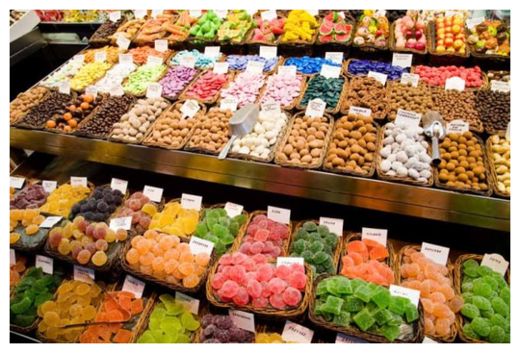
"This paper is provocative and very well done," says Antonio Rangel, a neuroeconomist at the California Institute of Technology in Pasadena, who was not involved in the new study. "It is exciting because it's a proof of concept that a relatively simple intervention can have this long-lasting effect."
Economists who study decision-making had previously found that, when deciding between multiple items, people tend to let their gaze linger on the things that they end up choosing. This observation has motivated companies to pursue flashy packaging to attract consumers' eyes.
Tom Schonberg, a neuroscientist at the University of Texas, Austin, wondered whether people's preferences could be changed before being faced with such a decision by training their brains to pay more attention to certain items.
His first task was figuring out what kind of junk food people preferred. He and his colleagues recruited more than 200 university students and set up an auction-style program that asked them how much they were willing to pay for 60 different kinds of snacks, from M&M's to Fritos. Then, the participants went through a 30- to 50-minute computer training program that showed photos of foods that the participants had already rated. When some treats appeared on the screen, a short tone would play and signal the subject to press a button as fast as possible. When other treats popped up, the computer remained silent and the subject refrained from pressing the button.
After the training session, Schonberg's team gave the subjects a new test, asking them to choose between two foods. Two-thirds of the time, the participants chose a snack that had been associated with a sound during training, even if they'd rated the food equal or slightly lower than the other food in the pairing in the initial auction. Moreover, when the researchers repeated the auction, the participants were willing to pay more than they'd bid previously for the items that had been accompanied by a sound and button-press, Schonberg and colleagues report online today in Nature Neuroscience.
When the researchers brought the subjects back as much as 2 months later, they found that the altered preferences remained: Subjects were still more likely to choose an item that had been associated with the tone during training. "The novelty here is that, without any external rewards or incentives, we've managed to influence people's values and choices over a long time period," Schonberg says.
How the training affects parts of the brain associated with decision-making isn't yet known. Waiting for a beep and pressing a button requires high levels of attention, Schonberg says, and it's likely that demand teaches someone to favor certain items they see while completing the task.
The results don't just hold lessons for advertisers trying to sell junk food, but also suggest a way to alter people's behaviors to make them healthier, says Nathaniel Daw, a computational neuroscientist at New York University in New York City who was not on Schonberg's team. "It's one thing to do this with different types of junk food," he says. "But could you do this to drive people away from Snickers bars and get them more interested in kale?"
He cautions, however, that - at least so far - the effects of the training are relatively small. It can't make someone like something that they previously disliked. (Kale, anyone?)
Schonberg's team is now pursuing ways to make the effect last even longer, and studying how well the training works to alter preferences of items other than junk food.



Reader Comments
to our Newsletter